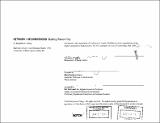Network/Neighborhood : building Telecom City
Author(s)
Chung, Benjamin S. (Benjamin Seung Woo), 1974-
DownloadFull printable version (10.51Mb)
Other Contributors
Massachusetts Institute of Technology. Dept. of Architecture.
Advisor
Ellen Dunham-Jones.
Terms of use
Metadata
Show full item recordAbstract
The coupling of virtual interfaces and physical places is integral in realizing the full potential of information technologies upon the planning of communities. To date, the urban model of development most associated with digital networks is single-use, low-density sprawl, as exemplified in California's Silicon Valley. However, this thesis proposes that a more traditional urban form can better complement and parallel the efficiencies afforded by information technologies. Mixed-uses, higher densities, and walkable main streets for synchronous face-to-face interaction coupled with service alleys for asynchronous delivery systems can support the information-based, 24-hour lifestyles desired by networked communities. While the notion of overlaying network technologies onto neighborhoods is new, the best physical frameworks that can house these wired communities may indeed be based on traditional urban patterns. Traditional urbanism is especially appropriate to sustain the processes of a fully wired and integrated community. First, as information technologies collapse space and time requirements for activities, so does the denser, mixed-use neighborhood. Secondly, mixed-use block configurations more naturally accommodate today's increasingly blurred distinctions between living and working, another phenomena nurtured by the advent of information technologies. At the same time, by virtue of its finer-grained, more concentrated and livable fabric, mixed-use blocks can foster a more vibrant street life and greater opportunities for the social networking that is so critical to the entrepreneurial, mobile workers of to day's agglomerative dot-com economies. Third, the physical patterns of street fronts and service alley spaces provide a simple but effective framework in which to house coordinated, synchronous interactions and around-the-clock asynchronous activities, a distinction that becomes increasingly significant to users of on-line environments. Recognition of these benefits offered by traditional urbanism can be pointed to in the recent emergence of cyber-districts such as New York's Silicon Alley in New York and San Francisco's South of Market Area. The thesis first considers how services and spaces in the community may be mapped out across virtual and physical dimensions, correlating what gets clustered and what gets dispersed as online services are mapped onto a neighborhood masterplan. The distinction between asynchronous and synchronous modes of services is used to both develop the urban masterplan and to suggest specific ways that conventional architectural models might better adapt to the networked neighborhood plan. The value of these integrated services and spaces is demonstrated in the context of scenario mapping between three different households: an elderly couple in an assisted living complex, a working class family with home business needs, and young telecommuting professionals in more urban mixed use units. The thesis explores these issues in are-design of Massachusetts' Telecom City project. Telecom City is a regional redevelopment initiative co-ventured by the cities of Malden, Everett and Medford. The project planners' goal is to convert 200 acres of underutilized and blighted land along the Malden River into a state-of- the-art telecommunications research and development office park. In contrast, the thesis will propose a more locally integrated neighborhood network, more along the lines of the new urban cyber-districts, that will ultimately add unique value to and create greater synergies with its surrounding towns.
Description
Thesis (M.Arch.)--Massachusetts Institute of Technology, Dept. of Architecture, 2000. Includes bibliographical references (p. 54-58).
Date issued
2000Department
Massachusetts Institute of Technology. Department of ArchitecturePublisher
Massachusetts Institute of Technology
Keywords
Architecture.